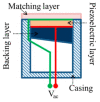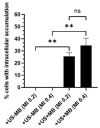Ultrasound-Mediated Ocular Drug Delivery: From Physics and Instrumentation to Future Directions
- PMID: 37630111
- PMCID: PMC10456754
- DOI: 10.3390/mi14081575
Ultrasound-Mediated Ocular Drug Delivery: From Physics and Instrumentation to Future Directions
Abstract
Drug delivery to the anterior and posterior segments of the eye is impeded by anatomical and physiological barriers. Increasingly, the bioeffects produced by ultrasound are being proven effective for mitigating the impact of these barriers on ocular drug delivery, though there does not appear to be a consensus on the most appropriate system configuration and operating parameters for this application. In this review, the fundamental aspects of ultrasound physics most pertinent to drug delivery are presented; the primary phenomena responsible for increased drug delivery efficacy under ultrasound sonication are discussed; an overview of common ocular drug administration routes and the associated ocular barriers is also given before reviewing the current state of the art of ultrasound-mediated ocular drug delivery and its potential future directions.
Keywords: acoustic cavitation; acoustic streaming; ocular barriers; ocular drug delivery; targeted drug delivery; ultrasound.
Conflict of interest statement
The authors declare no conflict of interest.
Figures














Similar articles
-
Nanocarriers for ocular drug delivery: Recent advances and future opportunities.Indian J Ophthalmol. 2023 Jun;71(6):2355-2366. doi: 10.4103/ijo.IJO_1893_22. Indian J Ophthalmol. 2023. PMID: 37322644 Free PMC article. Review.
-
Ultrasound and Microbubbles for the Treatment of Ocular Diseases: From Preclinical Research towards Clinical Application.Pharmaceutics. 2021 Oct 25;13(11):1782. doi: 10.3390/pharmaceutics13111782. Pharmaceutics. 2021. PMID: 34834196 Free PMC article. Review.
-
Ocular Drug Delivery.Handb Exp Pharmacol. 2017;242:57-93. doi: 10.1007/164_2016_84. Handb Exp Pharmacol. 2017. PMID: 27783270
-
Ultrasound-mediated nano drug delivery for treating cancer: Fundamental physics to future directions.J Control Release. 2023 Mar;355:552-578. doi: 10.1016/j.jconrel.2023.02.009. Epub 2023 Feb 15. J Control Release. 2023. PMID: 36773959 Review.
-
Ocular Drug Delivery: Role of Degradable Polymeric Nanocarriers for Ophthalmic Application.Int J Mol Sci. 2018 Sep 19;19(9):2830. doi: 10.3390/ijms19092830. Int J Mol Sci. 2018. PMID: 30235809 Free PMC article. Review.
References
-
- Szabo T.L. Diagnostic Ultrasound Imaging: Inside Out. Elsevier Academic Press; Amsterdam, The Netherlands: Boston, MA, USA: 2004. (Academic Press Series in Biomedical Engineering).
-
- Feng Z., Zhou X., Xu S., Ding J., Cao S.J. Impacts of Humidification Process on Indoor Thermal Comfort and Air Quality Using Portable Ultrasonic Humidifier. Build. Environ. 2018;133:62–72. doi: 10.1016/j.buildenv.2018.02.011. - DOI
-
- Nair P., Kannan N., Dhinakar P. Design and Development of Variable Frequency Ultrasonic Pest Repeller. J. Adv. Res. Dyn. Control Syst. 2017;9:22–34.
-
- Park W.J., Kim B.S., Seo D.E., Kim D.S., Lee K.H. Parking Space Detection Using Ultrasonic Sensor in Parking Assistance System; Proceedings of the 2008 IEEE Intelligent Vehicles Symposium; Eindhoven, The Netherlands. 4–6 June 2008; pp. 1039–1044. - DOI
Publication types
Grants and funding
LinkOut - more resources
Full Text Sources

